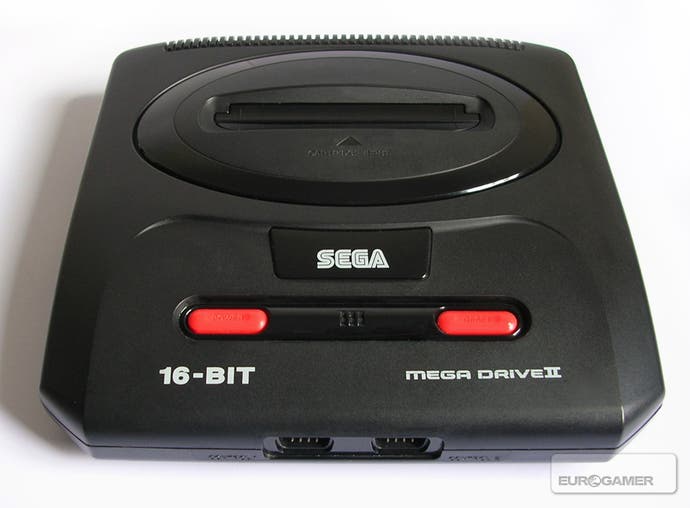Twenty years of the Mega Drive
To be this good took ages.
The long-awaited Super NES struggled to displace the Mega Drive due to release delays and, to be frank, sour grapes on the part of suspicious developers. And, at every turn, SEGA's shrewd marketing strategies kept it one step ahead. When Nintendo released its annual Mario game, SEGA slashed the price of the console to practically sell it at cost (with Sonic thrown in for good measure), and the Mega Drive spread like a wonderful, silicon virus across Europe and South America. Even the Master System received some overdue attention as conversions of Mega Drive games were made to support the faithful gamers who still cradled a hand-polished square joypad.
But the corporate mind is singular in purpose, and the perceptive tactics SEGA had employed to establish the Mega Drive duped the company into focusing, once again, on hardware saturation. The Mega Drive was dissected and tested like a laboratory rat, with accessory after peripheral after redesign butchering the system's purity into some kind of repulsive amalgam. The Mega-CD and 32X add-ons were both reasonable concepts, intended to prolong the life of the Mega Drive now the SNES had technical superiority, but concentrating on so much hardware (with concept projects Mars, Jupiter and Saturn all bouncing around SEGA R&D) the games giant casually overlooked the software needed to support these peripherals. With a lack of quality games to shore them up, the two accessories quickly fell among thieves.
SEGA immediately embraced the bad habit that would eventually cause it to pull out of the hardware market all together. Instead of returning its attention to the still successful Mega Drive, and continuing to promote the incredible games that had shunted the system into first place, it assumed that more add-ons and technical improvements were the answer. As rumours of the Saturn project increased in the background a slew of Mega Drive alternatives and redesigns attempted to wring the last few drops of blood from the once great stone. Gradually, the thrice-bastardised Mega Drive became something of a joke without a punch line - unceremoniously forsaken once the Saturn came along. Or so it seemed.

Way back in 1987, when SEGA was first designing the Mega Drive, the Brazilian company TecToy was founded to build electronic toys for the South American markets. It landed the contract to become SEGA's local representative, and over time SEGA gradually allowed it to manufacture gaming hardware that had fizzled out in other regions. Since this was a part of the globe that had been almost completely ignored by the games industry, officially produced Master Systems and Mega Drives became immensely popular, to the point that TecToy still builds (and sells) variations on the hardware today.
And it's not alone. The retro revival culture that hit with the millennium saw the Mega Drive's glory restored. Plug-and-play TV games brought Sonic and friends racing back to our screens, teams of dedicated home-brew programmers have spent years celebrating SEGA franchises like Streets Of Rage, and once-bitter rival Nintendo relies on it to populate its online games catalogue for the Wii. Even handheld versions of the classic system are finally reaching their potential more than a decade after the Nomad failed to make a dent on the collapsing Mega Drive market.
As its 20th anniversary rolls around we find ourselves in a very different videogame world, but the Mega Drive is undeniably one of the most solid parts of the modern industry's foundations. This is a machine that's earned its place in history and weathered as many bad times as good. Its hardware legacy might be somewhat shrouded in absurdity, but the games it made possible will be remembered as the pinnacle of 16-bit arcade gaming.







.jpg?width=291&height=164&fit=crop&quality=80&format=jpg&auto=webp)